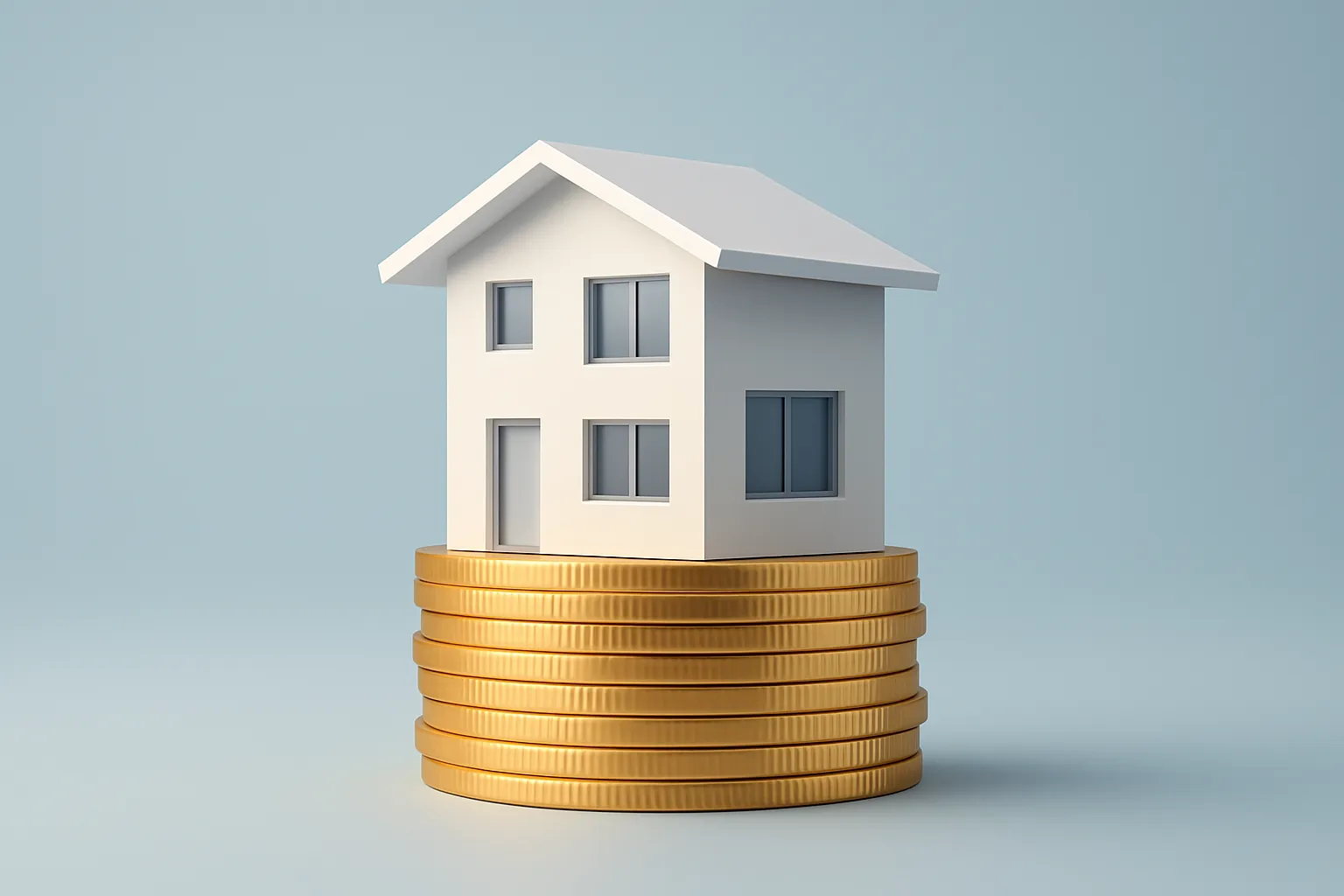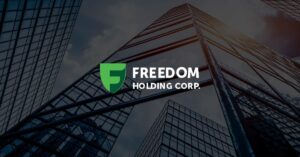Real estate plays a crucial role in personal wealth portfolios, offering diverse opportunities for financial growth. This article explores various strategies and insights from industry experts on maximizing returns in the real estate market. From leveraging control in investments to implementing innovative approaches like the “BRRRR” strategy, readers will gain valuable knowledge to enhance their wealth-building efforts.
- Leverage Control in Real Estate Investments
- Build Passive Income Through Student Rentals
- Craft Unique Short-Term Rental Experiences
- Create Lasting Value Through Principled Investing
- Acquire Properties Using Seller Financing
- Implement ‘BRRRR’ Strategy for Wealth Building
- Spot Overlooked Stability in Commercial Real Estate
- Scale Vacation Rentals with Guest-Centric Approach
- Buy Good Properties in Secondary Markets
- Transform Undervalued Properties for Profit
- Combine Steady Income with Long-Term Growth
- Maximize Returns Through Strategic Improvements
- Structure International Multifamily Investments Legally
- Turn Vision into Real Estate Success
- Diversify Portfolio with High-Reward Properties
- Generate Passive Income Through Mortgage Notes
- Transition from House Hacking to Syndications
- Combine Land Development with Home Manufacturing
Leverage Control in Real Estate Investments
For me, real estate has always been the foundation of my personal wealth strategy. As someone who’s in the trenches of the market daily, I’ve seen firsthand how real estate, done right, can outperform many other investment vehicles over time. It’s not just about cash flow or appreciation; it’s about control. With real estate, I get to directly influence the outcome through smart renovations, tenant selection, or strategic financing. You don’t get that kind of leverage or hands-on impact with stocks or mutual funds.
One of my most successful investments was a small, detached home in East Vancouver that I purchased several years ago. At the time, it wasn’t the sexiest property, with dated finishes, an older roof, and minimal curb appeal, but what stood out to me was the zoning potential and the neighbourhood’s upward trend. I renovated it moderately (not a full gut), refinanced it once the value increased, and later added a laneway home in the back. Not only did the cash flow improve dramatically, but the overall property value more than doubled within five years.
In my opinion, the best investments aren’t always the flashy ones. They’re the ones with potential that others overlook, and the ones you can add value to over time. That’s the beauty of real estate: you don’t have to wait for the market to move if you know how to move within it.
 Adam Chahl
Adam Chahl
Owner / Realtor, Vancouver Home Search
Build Passive Income Through Student Rentals
Real estate is the foundation of my personal wealth portfolio. It’s what allowed me to go from a full-time pharmacist to building a multiple six-figure passive income stream without quitting my job. I’ve since retired at age 31 from my full-time job.
I focus on a niche most investors overlook: renting by-the-room to college students near major universities. One of my most successful investments was a single-family home I bought for $367,000 (down from the original $450,000 asking price). By negotiating directly with the seller during a slower market, I saved 18.4% on the purchase price.
I renovated the property and now rent it out by the room to several students. That one house brings in $3,660/month in cash flow. And because student rentals tend to be recession-resistant, this strategy has helped me weather market shifts while steadily building long-term wealth.
 Ryan Chaw
Ryan Chaw
Founder and Real Estate Investor, Newbie Real Estate Investing
Craft Unique Short-Term Rental Experiences
Real estate forms the foundation of my portfolio, offering a combination of stable cash flows while also enabling the ability to allocate capital towards value-add repositions. I put 70 percent of my cash flow into income-producing rentals, mainly short-term rentals where I can take advantage of dynamic pricing and seasonal decor updates to maximize nightly rates. I set aside 30 percent for flipping under-capitalized properties in growing neighborhoods.
One memorable project started as a rundown bungalow in a secondary market that most investors passed over. Rather than defaulting to a vanilla makeover, I came up with an offbeat “artisan tile tour” idea. I hired local ceramic artists to handcraft feature walls in every room, along with installing reclaimed-wood floors and custom cabinetry complete with USB charging stations. We marketed it as more than just a room to stay in, but as a mini gallery and a space for digital nomads. It reached 90 percent occupancy at a nightly rate 35 percent higher than the neighborhood average within six weeks of listing. Guest reviews consistently commented on the custom tile installations as a “reason to book again.” That experience further convinced me that the marriage of construction craftsmanship and targeted storytelling can yield outsized returns.
 Mark Lumpkin
Mark Lumpkin
Sales Director in Renovation & Design, STR Cribs
Create Lasting Value Through Principled Investing
For me, real estate has never been just about buying and selling homes — it’s a long-term wealth-building strategy and a reflection of my values. My vision has always been to redefine the real estate experience with integrity, excellence, and genuine care — and I carry that same mindset into my personal investment strategy.
In my opinion, real estate offers a rare combination of stability, leverage, and cash flow. What makes it so powerful is that it’s both a tangible asset and a relationship-driven investment. That aligns perfectly with how I run my business: valuing people, thinking long-term, and making decisions with clarity and intention.
One successful investment story that stands out is a duplex I purchased early on in an overlooked but promising neighborhood. While others saw risk, I saw potential — based on my local market knowledge, zoning trends, and community development plans. I renovated the property, lived in one unit, and rented out the other. That property ended up covering my living expenses and appreciating far beyond expectations. I later pulled equity from it to invest in additional properties, and that single move became the foundation of my portfolio.
That experience reinforced what I already believe in both life and business: when you lead with care, make informed decisions, and stay focused on service — not just outcomes — you create lasting value. Real estate plays a central role in my wealth strategy because it reflects everything I stand for: giving more than expected, building trust, and making smart, human-centered decisions.
Whether I’m helping a client find their next home or investing personally, I’m always guided by the same principles — do the right thing, do it well, and always keep people at the heart of the process.
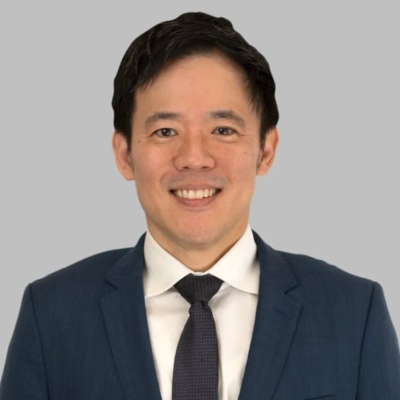 Jack Ma
Jack Ma
Real Estate Expert, Jack Ma Real Estate Group
Acquire Properties Using Seller Financing
I specialize in buying properties with seller financing, which is a rather niche way of acquiring real estate. Typically, these sellers are older individuals who have paid off their properties but also face substantial tax liabilities if they sell them outright. Spreading out the payments and then paying a balloon payment after 10 years makes a lot of sense to them as they continue to receive cash flow, but at a lower tax percentage than capital gains. This way, it’s taxed as income.
My portfolio has performed significantly better since I shifted to this model. It allows me to enter more deals with less money invested. It has also become much more challenging to obtain good financing on commercial properties, so this approach has been particularly advantageous for me.
My biggest success over the past few years was purchasing a 3-bedroom, 2-bathroom house in Phoenix for $285,000, with a $25,000 down payment. The monthly payment is $1,500 after taxes and taking care of the seller. The house rents for $2,000 per month and has since appreciated in value to $345,000 in just one year. So, I’ve gained $60,000 in equity in one year, and I have $500 per month coming in from that asset.
 Hadley McIntosh
Hadley McIntosh
Founder, Sell with Seller Financing
Implement ‘BRRRR’ Strategy for Wealth Building
Real estate has been the cornerstone of my financial strategy, as I receive predictable cash flow, long-term growth, and a host of premier tax advantages. Unlike more volatile investments such as stocks and bonds, real estate is an asset class that can be actively managed — from setting rental rates to implementing strategic renovation plans — that can have a demonstrable impact on returns and mitigates the potential for downside.
I have a well-balanced combination of a five-unit apartment generating stable net operating income, a portfolio of seller-financed mortgage notes resulting in double-digit returns, and a leased farmland parcel offering a hedge against market cycles. Outside of these, I have allocated some funds to tax-lien certificates, for a fixed income play earning 12-18%, and I have partnered on a debt syndication to diversify across markets, to minimize concentration risk.
I was walking the streets last year when I came across the most attractive property I had ever seen: a slightly dilapidated 1928 Craftsman bungalow in Des Moines (where I already owned several houses as investments) that had “BRRRR” written all over it, as we say in the trade (“Buy, Rehab, Rent, Refinance, Repeat!”), because it was so clearly evident what quick work I could make of it. This project was purchased for $75,000 — or about 40% off of the sales comparable — and had $30,000 of renovations (focused on energy-efficient upgrades and open-concept design) funded with a combination of private equity and a short-term hard-money loan.
Two weeks later, a tenant moved in at $1,250 per month, and when we refinanced, we received financing for 75 percent of its appraised value and recovered 105 percent of our initial outlay — all while securing a 6.2 percent fixed-rate mortgage. This deal yielded a 20% annualized return and reset the clock for the next purchase, fitting perfectly with the BRRRR model, which is designed to turn the capital over quickly.
 Jacob Naig
Jacob Naig
Owner & Real Estate Investor, Webuyhousesindesmoines
Spot Overlooked Stability in Commercial Real Estate
Real estate plays a quiet but powerful role in my portfolio — it’s not flashy, but it’s dependable.
One of my favorite (and most unexpected) successes came from a small commercial office condo I bought during the pandemic. Everyone was panicking about remote work and “the death of office space,” which drove prices down. However, I noticed something: local professionals — therapists, accountants, small law firms — still needed small, private spaces, especially as co-working became crowded or impractical for client confidentiality.
I bought a 900 sq ft unit for 30% below its pre-2020 value. It needed only light renovations — new carpet, paint, and HVAC servicing. Within three months, I had it leased to a therapist group at a 7.5% cap rate, with built-in rent increases. That same group just renewed for another three years, and the space is now valued 40% higher than what I paid.
It wasn’t the kind of investment you see on YouTube or real estate TikTok, but it cash flows steadily, has nearly doubled in equity, and required far less headache than residential rentals. For me, real estate is less about chasing huge wins and more about spotting overlooked stability.
 Mohit Koshal
Mohit Koshal
Mortgage Broker, Credit Hub
Scale Vacation Rentals with Guest-Centric Approach
Real estate is my engine, not just a part. Unlike stocks and other assets which sway with market sentiment, my vacation rental properties produce dependable cash flow, capital appreciation (it has an average 5.0% increase over the past year), and tax perks. I possess my properties as if they were micro-businesses: comprised of guest experience, pricing for profit, and management for scale. I partner with real estate because it enables me to control returns at a different level than any passive investment would.
Want a successful investment story? Let’s go to Dubai. I bought a two-bedroom unit from an owner who had it on the market for 8 months because of lackluster staging and bad photos. After a complete interior design overhaul with a focus on guest psychology and preferences (warm soft lighting, giving guests the orientation to the space, and high-end finishes), I rented it out as my first short-term rental unit. In 60 days, I had it rented 90% of the time and also began getting rates for nightly rentals 40% higher than the comparable units. The measure of success wasn’t just financial for me; it was a model for scaling a portfolio.
 Hassan Morcel
Hassan Morcel
CEO, Dubai Short Term Rentals
Buy Good Properties in Secondary Markets
I rely on real estate almost exclusively for my family’s wealth. I’ve been buying rental properties in the U.S. as a non-resident foreigner since 2016. At peak, our portfolio had more than 12 doors. I like real estate because it’s so simple. Everyone tries to overcomplicate it — or look for the “perfect” deal, which just doesn’t exist. I stick to buying good quality properties in B and C class neighborhoods in the suburbs of secondary markets in the Midwest, Northeast, and South. That’s what’s worked out best for us. I’ve even overpaid for the right property. Like my mentor says, “It’s better to overpay for an asset than to get a discount on a problem.”
The best deal we did was a house in New Castle, PA. We bought it from a wholesaler for about $25,000, put about $15,000 into it, then leased it for $1,000/month. Then we sold it to the tenant 3 years later for $86,000. While the numbers weren’t huge, the percentages make it one of the best deals I’ve ever done, especially considering we used a private money loan to buy and rehab the house, so we had zero dollars in the deal — it was 100% profit on our time and sweat equity. I don’t see too many deals like that these days, but they crop up from time to time if you keep your ear to the ground in your market.
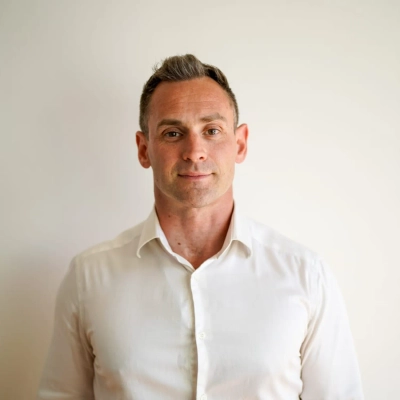 David Garner
David Garner
General Manager, Cashflow Rentals
Transform Undervalued Properties for Profit
Real estate isn’t just about selling homes; it’s about making your money work for you.
Real estate plays a very important role in my own wealth portfolio. If you choose the right neighborhoods with growing potential, it provides a solid investment that often appreciates over time. I have always believed that property can generate long-term wealth, both through rental income and eventual profits on its resale. One successful investment story is from when I bought a small apartment building in a developing area. The property wasn’t in the best condition aesthetically, but I recognized its potential. After renovating the units and improving the space’s appearance, I managed to increase the rental income significantly. I sold the property after several years for a good profit, all while collecting a steady rental income during ownership.
Real estate gives me a diverse revenue stream, and with the right approach, it can be a goldmine. Simply finding properties is not the aim; it’s about finding the right ones that align with your long-term financial goals.
Due to its quality of combining steady income with long-term growth potential, real estate is the foundation of my wealth portfolio. With a careful eye for opportunity and a bit of elbow grease, it can offer significant returns, both through rental income and profitable sales.
 Jeff Goodman
Jeff Goodman
“Quintessential New Yorker®” and a Licensed Real Estate Agent, Brown Harris Stevens
Combine Steady Income with Long-Term Growth
Real estate has been the foundation of my wealth portfolio for decades. It’s not just an asset class; it’s a long-term strategy that offers stability, cash flow, and the kind of leverage you don’t get with most investments. I’ve invested in everything from single-family homes to large commercial properties, and I’ve learned that timing, location, and patience are key.
One investment that stands out is a multifamily building I bought early in my career. The property wasn’t flashy, but it was in a growing area and priced well below its potential. Over the years, I improved the units, stabilized the tenant base, and held onto it during some rocky markets. Not only did it generate steady rental income, but I eventually sold it for more than double what I paid. That deal funded a handful of other investments. It was a perfect example of real estate compounding over time.
Real estate isn’t always glamorous. But if you stay disciplined, focus on value, and play the long game, it can be one of the most powerful tools for building wealth.
 Richard Maize
Richard Maize
Investor, Richard Maize Enterprises
Maximize Returns Through Strategic Improvements
The majority of my net worth is tied up in real estate. Real estate is my main income-producing asset class, and it’s where I experiment with various asset structures. About 65% of my capital is invested in short-term rental units with Checkmate Rentals, where I use daily rate analytics and occupancy predictions to maximize income. Roughly 35% is placed in my value-add flips or out-of-the-box concepts, such as co-living suites and converted commercial spaces.
An exceptional project involved viewing a lakefront lot as a membership-driven retreat, as opposed to a mere vacation home. Marketing those cabins on VRBO along with an exclusive membership package produced 95 percent occupancy in season one and opened up ancillary event revenues. This demonstrated how cross-sectoral alliances and hybrids of traditional business models can unearth value far beyond the assumptions of a spreadsheet.
 Chad Phillis
Chad Phillis
Founder & CEO, Checkmate Rentals
Structure International Multifamily Investments Legally
As a legal professional and investor, I view real estate — especially multifamily properties — as a resilient asset class that balances cash flow with long-term appreciation. It also provides unique legal structuring opportunities for international investors seeking stable returns and regulatory clarity.
One of my most successful international real estate investments was facilitating and co-investing in a multifamily residential complex in Texas, together with a group of foreign limited partners from Europe and Israel. The investment was structured through a U.S.-based LLC with a Regulation D 506(b) exemption to ensure SEC compliance, and the foreign investors came in under IRS W-8BEN forms to handle their tax obligations transparently.
Key legal actions we took to protect all parties included:
- Forming a Delaware LLC with an operating agreement tailored for multi-member, international ownership.
- Hiring a U.S. tax advisor to structure the waterfall distribution model and file FIRPTA-compliant withholding in the event of a sale.
- Setting up EB-5-compatible reporting procedures, though immigration benefits were not used in this case.
- Insuring the asset with general liability and landlord insurance and placing the management under a professional licensed property manager.
Within 24 months, we were able to raise rents by 15%, reduce vacancies, and refinance the property at a significantly higher valuation. The deal yielded an IRR above 18%, with consistent quarterly cash flows and strong legal protections for all stakeholders.
In the European context, I’ve advised clients investing in Germany’s multifamily market, particularly in Berlin and Leipzig. Germany has strong tenant protections, so we conducted deep due diligence on rent control (Mietpreisbremse) and local ordinances. We structured acquisitions through GmbH & Co. KG entities, which allowed flexibility in ownership while protecting partners from liability and ensuring tax efficiency.
In both the U.S. and EU, legal protection in multifamily investments involves:
- Entity structuring and liability shielding,
- Lease and eviction law compliance,
- Tax and reporting alignment (especially across borders),
- And constant monitoring of local regulatory shifts (e.g., rent control or zoning changes).
Ultimately, multifamily real estate has been a cornerstone of my portfolio — not only for its returns but for the legal complexity it allows me to leverage for both protection and optimization.
 SERHII KOLISNYK
SERHII KOLISNYK
Partner, Attorney-at-Law, Phd in Law, Managing Partner of LOBBY CLUB
Turn Vision into Real Estate Success
Real estate is a cornerstone of my personal wealth strategy. It has played a crucial role in helping me build long-term financial security, diversify my income streams, and create the freedom I’ve always craved — both in my business and personal life.
I didn’t come from money. I didn’t have a financial safety net, business background, or any kind of formal education, let alone an education in investing. But I had vision, determination, and a strong work ethic, and that’s what got me started. In 2020, without help or handouts, I bought my first investment property. Within six months, I had added two more to my portfolio. Each property was carefully chosen to offer a mix of cash flow, growth potential, and long-term value.
One of my most successful investments was a tired, unloved terrace in the south of England that other investors had overlooked. I saw potential where others saw problems. I negotiated, bought below market value, and transformed the property with a simple yet strategic refurbishment. The end result? A rental yield of over 9% and a significant uplift in equity — all achieved within a few months. I bought that property with bridging finance, and the project wasn’t without its problems — I encountered my first rogue trader, and because of this, had to pay for the construction work twice. Yes, twice. Yet it paid off. Today, I still own that property, and it is worth 53% more than what I paid for it.
That one investment gave me the confidence and momentum to keep going, and it taught me a powerful lesson: you don’t need a trust fund or a degree to build wealth through real estate. You just need to get smart, get resourceful, and get started.
Today, property investment continues to be a key part of my portfolio. It complements my business income, gives me passive revenue, and underpins my mission: helping others escape the 9-to-5 grind, take control of their income, and build a life on their terms.
Real estate gave me options. It also taught me life lessons. And I believe that with the right mindset and strategy, it can do the same for others.
 Bethan Jeentipraphet
Bethan Jeentipraphet
CEO & Real Estate Investor, The Virtual Assistant Company TVAC Ltd
Diversify Portfolio with High-Reward Properties
Real estate makes up about 75% of my net worth. The reason for that is because, although it is higher risk than low-cost index funds, the rewards are much higher. You also get several benefits such as cash flow, depreciation, appreciation, tax write-offs, and leverage. For example, I purchased a property in 2018 for $75,000. Although this was my first investment property and I paid over asking price at the time, that house has since gone up in rent by around $500 and doubled in price. Low-cost index funds, though they are a safer investment vehicle, will not provide such big wins like that of real estate. However, it is important to have a diverse portfolio.
 Sergio Aguinaga
Sergio Aguinaga
Real Estate Investor, Michigan Houses For Cash
Generate Passive Income Through Mortgage Notes
Real estate plays a key role in my personal wealth portfolio through holding mortgage notes. Instead of owning the physical property, I hold the debt — meaning I receive monthly payments like a landlord would, but without dealing with tenants, repairs, or property management.
One successful investment was purchasing a performing mortgage note on a single-family home. The borrower had a strong payment history, and I acquired the note at a discount. It has generated steady monthly income with minimal oversight, and the note is backed by real estate, so the collateral adds security.
It’s a powerful way to invest in real estate passively — cash flow without the headaches.
 Abby Shemesh
Abby Shemesh
Chief Acquisitions Officer, Amerinote Xchange
Transition from House Hacking to Syndications
Real estate plays a large part in my family’s portfolio. Like many investors, my mindset totally changed after reading the book “Rich Dad Poor Dad.” As a licensed Realtor, my path was a little easier than most because I was already working full-time in the space. My first property was a house hack which I lived in for a while and still own today. Over time, I switched to larger multi-family syndications, transitioning to an LP position and allowing others to manage the operations. Real estate has not only provided monthly cash flow but has also increased my net worth through the property’s appreciation.
 Marc Van Steyn
Marc Van Steyn
Owner, EasySell Cash Homebuyers
Combine Land Development with Home Manufacturing
One of the things I love about real estate is that there are so many ways to invest in it. One of my current real estate ventures involves finding desirable undeveloped land near the edges of suburbs and rural areas that are likely to be developed soon. This complements our home manufacturing business nicely, since we can sell land to potential residents, and then sell them housing too.
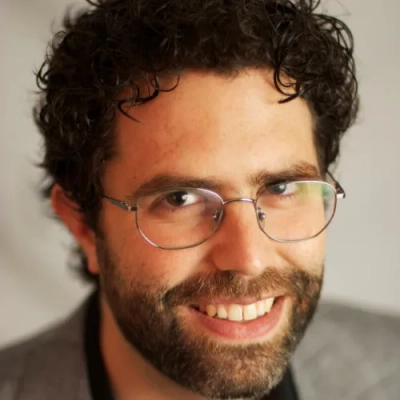 Jonathan Palley
Jonathan Palley
CEO, Clever Tiny Homes

